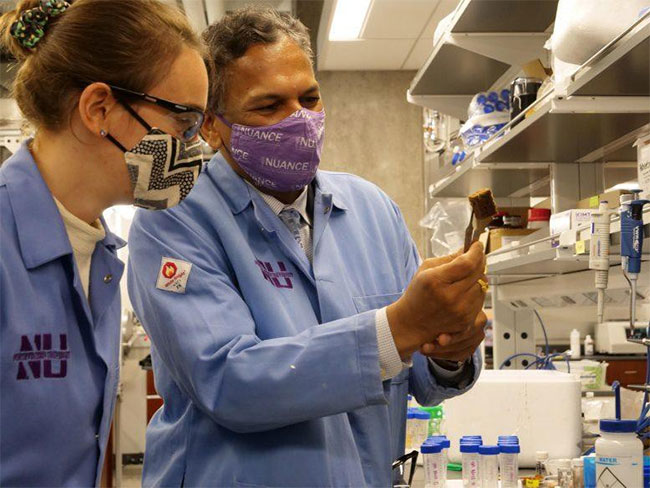For the first time, American researchers have discovered a novel water purification method they call the “Swiss Army Knife” method, which can absorb phosphates from water and remove excess phosphates.
Phosphate pollution in rivers, lakes, and other waterways around the world has reached dangerous levels, causing algal blooms that deplete oxygen for fish and aquatic plants. Meanwhile, farmers globally are facing dwindling reserves of phosphorus fertilizers.

The two authors of the PEARL membrane research for filtering and recovering phosphates in the laboratory.
Inspired by various water bodies near Chicago, a research team from Northwestern University in the United States has developed a method to remove and reuse phosphates multiple times from polluted water. The researchers liken this development to a “Swiss Army Knife” for addressing pollution, as it is designed to absorb contaminants and then release other pollutants.
This study was recently published in the Proceedings of the National Academy of Sciences on May 31.
Where There is Surplus, Where There is Shortage
All living organisms on the planet need phosphorus as it is present in cell membranes, the backbone of DNA, and in our bones. While other essential elements like oxygen and nitrogen can be found in the atmosphere, phosphorus does not have a similar source. A small amount of usable phosphorus comes from the Earth’s crust, which takes thousands or even millions of years to deplete, while phosphorus used for agricultural fertilizers is gradually running out.
While this non-renewable natural resource is in short supply, many lakes around the world have such an excess of phosphorus that it accumulates, creating dense aquatic vegetation and algae that deplete oxygen from the water and ultimately kill aquatic life.
Traditionally, ecologists and engineers have developed strategies to address the growing environmental and public health concerns surrounding phosphorus by removing it from water sources. Only recently has the focus shifted from removal to recovery of phosphorus.
Vinayak Dravid, a co-author of the study, stated: “With our special sponge, we can both filter phosphorus from water and recover it.”
The special sponge is a lightweight membrane that removes and recovers phosphates (PEARL) developed by the research team. It is a porous, flexible substrate (such as a coated sponge, fabric, or fiber) that isolates and filters up to 99% of phosphate ions from polluted water. Coated with nano-structures that bond with phosphates, the PEARL membrane can be adjusted by controlling the pH to absorb or release nutrients, allowing for the recovery of phosphates and the reuse of the membrane over multiple cycles.
Current phosphate removal methods rely on complex, lengthy, multi-step processes. Most of them also fail to recover phosphorus during the removal process and ultimately generate a significant amount of physical waste. The PEARL membrane provides a simple one-step process for both removing and efficiently recovering phosphates. It is also reusable and does not produce physical waste.
By modifying the nano-material coating in the membrane, the team intends to next use their “plug-and-play” framework to filter out heavy metals. Multiple pollutants can be addressed simultaneously by applying various materials with suitable properties.



















































